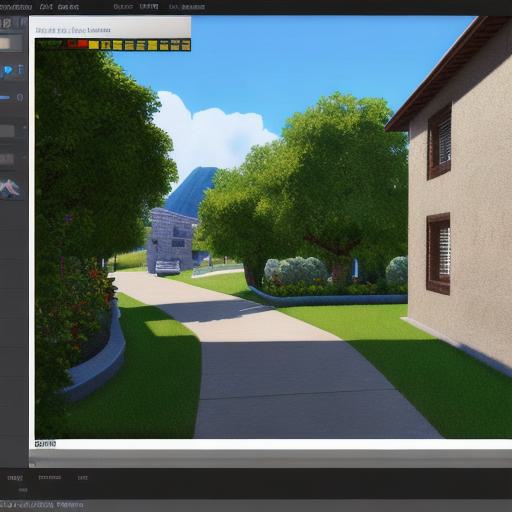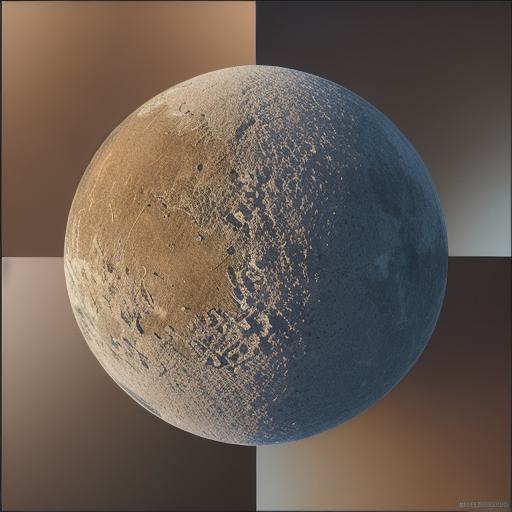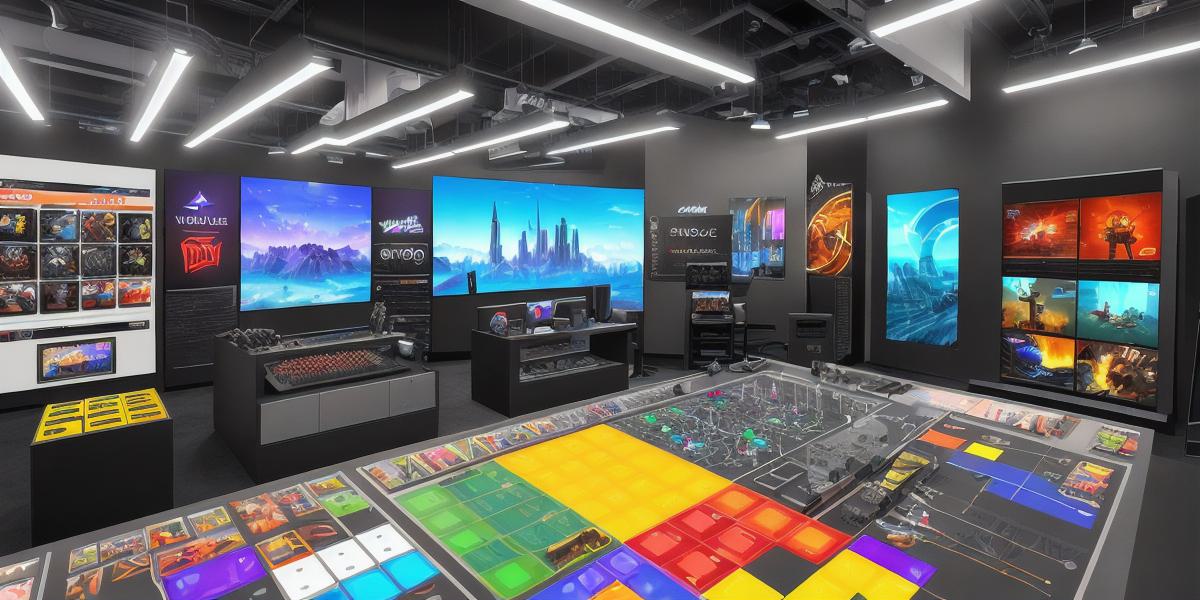Introduction

The video game industry has seen rapid growth in recent years, with millions of people worldwide spending billions of hours playing games on various platforms. As a result, the demand for game design tools and apps is also increasing as more individuals and organizations seek to create engaging video games that captivate audiences. In this article, we will explore the top 10 game design tools and apps that are widely used in the industry. We will examine their features, advantages, and disadvantages, and discuss real-life examples of how these tools have been utilized to create successful games.
- Unity
Unity is one of the most popular game development platforms in use today. It offers a wide range of features that make it easy for developers to create both 2D and 3D games for various platforms, including mobile devices, PCs, consoles, and virtual reality systems. With its powerful physics engine, Unity can handle complex animations and interactions with ease, making it an ideal choice for game designers who want to create immersive gaming experiences.
One of the key advantages of Unity is its ease of use. The platform has a user-friendly interface that makes it easy for beginners to get started with game development. Additionally, Unity’s vast library of pre-built assets, such as characters, objects, and textures, can save developers significant time and effort when creating games.
- Unreal Engine
Unreal Engine is another popular game development platform that is widely used in the industry. It offers many features similar to Unity, including a powerful physics engine, support for both 2D and 3D graphics, and cross-platform compatibility. One of the key advantages of Unreal Engine is its ability to handle large datasets with ease, making it an ideal choice for developing complex games that require high-performance graphics and animations.
Unreal Engine also offers a range of advanced features, including real-time rendering, dynamic lighting, and physics simulation, which can be used to create highly immersive gaming experiences. However, these features require significant technical expertise, making Unreal Engine more suitable for experienced game developers.
- GameMaker Studio 2
GameMaker Studio 2 is a popular game development platform that is designed specifically for creating 2D games. It offers a range of features that make it easy for developers to create games with minimal coding, including drag-and-drop scripting, pre-built assets, and support for various platforms. GameMaker Studio 2 also supports physics simulation, allowing developers to create complex animations and interactions within their games.
One of the key advantages of GameMaker Studio 2 is its ease of use. The platform has a user-friendly interface that makes it easy for beginners to get started with game development. Additionally, GameMaker Studio 2 offers a range of pre-built assets, including characters, objects, and textures, that can save developers significant time and effort when creating games.
- Stencyl
Stencyl is a game development platform that is designed specifically for creating interactive stories and educational games. It offers a range of features that make it easy for developers to create engaging content without the need for extensive technical expertise, including drag-and-drop scripting, pre-built assets, and support for various platforms. Stencyl also supports physics simulation, allowing developers to create complex animations and interactions within their games.
One of the key advantages of Stencyl is its ease of use. The platform has a user-friendly interface that makes it easy for beginners to get started with game development. Additionally, Stencyl offers a range of pre-built assets, including characters, objects, and textures, that can save developers significant time and effort when creating games.
- Construct 3
Construct 3 is a game development platform that is designed specifically for creating interactive stories and educational games. It offers a range of features that make it easy for developers to create engaging content without the need for extensive technical expertise, including drag-and-drop scripting, pre-built assets, and support for various platforms. Construct 3 also supports physics simulation, allowing developers to create complex animations and interactions within their games.
One of the key advantages of Construct 3 is its ease of use. The platform has a user-friendly interface that makes it easy for beginners to get started with game development. Additionally, Construct 3 offers a range of pre-built assets, including characters, objects, and textures, that can save developers significant time and effort when creating games.
- Blender
Blender is an open-source 3D modeling software that is widely used in the game development industry for creating 3D models, textures, and animations. It offers a range of features that make it easy for developers to create high-quality content without the need for extensive technical expertise, including support for various file formats, real-time rendering, and physics simulation.
One of the key advantages of Blender is its versatility. The software can be used for a wide range of tasks, including 3D modeling, texturing, animation, and visual effects. Additionally, Blender has a large community of users who contribute to its development, ensuring that it continues to evolve and improve over time.
- Photoshop
Photoshop is an industry-standard image editing software that is widely used in the game development industry for creating textures, characters, and other graphical elements. It offers a range of features that make it easy for developers to create high-quality content without the need for extensive technical expertise, including support for various file formats, real-time rendering, and physics simulation.
One of the key advantages of Photoshop is its versatility. The software can be used for a wide range of tasks, including image editing, graphic design, and 3D modeling. Additionally, Photoshop has a large community of users who contribute to its development, ensuring that it continues to evolve and improve over time.
- GIMP
GIMP is an open-source image editing software that is widely used in the game development industry for creating textures, characters, and other graphical elements. It offers many of the same features as Photoshop, including support for various file formats, real-time rendering, and physics simulation. However, GIMP is free to use, making it an attractive option for individuals and organizations with limited budgets.

One of the key advantages of GIMP is its versatility. The software can be used for a wide range of tasks, including image editing, graphic design, and 3D modeling. Additionally, GIMP has a large community of users who contribute to its development, ensuring that it continues to evolve and improve over time.
- Twine
Twine is a game development platform that is designed specifically for creating interactive stories and educational games. It offers a range of features that make it easy for developers to create engaging content without the need for extensive technical expertise, including drag-and-drop scripting, pre-built assets, and support for various platforms. Twine also supports physics simulation, allowing developers to create complex animations and interactions within their games.
One of the key advantages of Twine is its ease of use. The platform has a user-friendly interface that makes it easy for beginners to get started with game development. Additionally, Twine offers a range of pre-built assets, including characters, objects, and textures, that can save developers significant time and effort when creating games.
- Scratch
Scratch is a game development platform that is designed specifically for children and educators. It offers a range of features that make it easy for developers to create engaging content without the need for extensive technical expertise, including drag-and-drop scripting, pre-built assets, and support for various platforms. Scratch also supports physics simulation, allowing developers to create complex animations and interactions within their games.
One of the key advantages of Scratch is its accessibility. The platform is designed specifically for children and educators, making it easy for them to learn and use. Additionally, Scratch has a large community of users who contribute to its development, ensuring that it continues to evolve and improve over time.
In conclusion, there are many different game development platforms available, each with their own unique features and capabilities. When choosing a platform, it is important to consider the specific needs of your project and the technical expertise of your team. By doing so, you can ensure that you choose the right platform for your game development needs.



